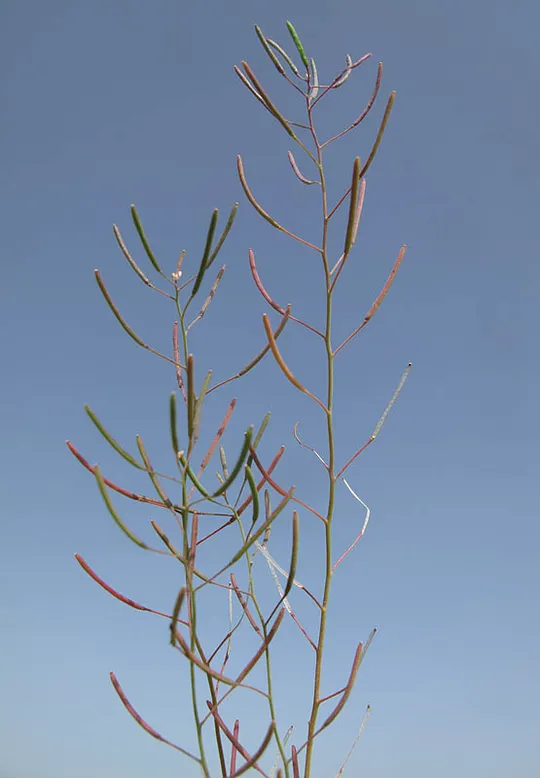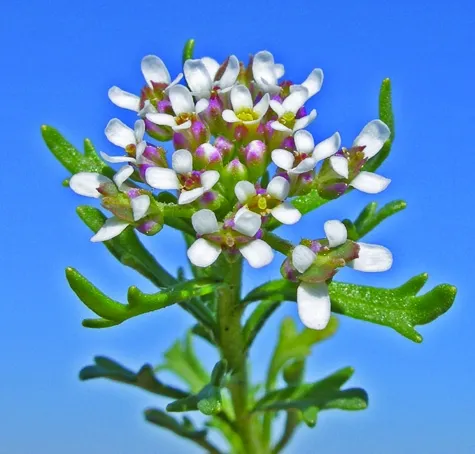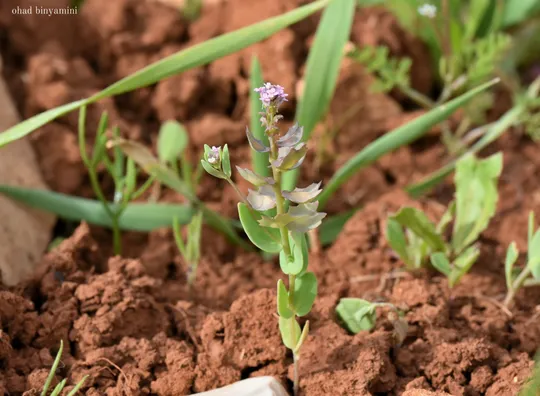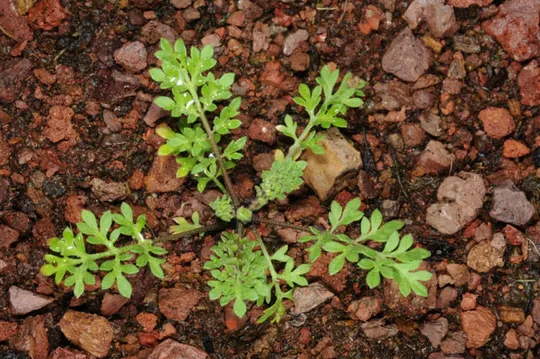Dwarf Rocket
Arabidopsis pumila
Arabidopsis
pumila is extinct in Israel. It was included in the Flora Palaestina
following two previous collections: in the Judean Mountains by the botanist Dinsmore
who found it on the Jerusalem walls in 1912, and in the Negev Highlands by
Naphtali Tadmor in "Nakeb Sahali" (Ma’ale
Ramon) in the Negev Highlands in 1945, while serving as a Palmach scout. Recent
observations in the Negev Highlands (Hemet Pit, 1989 and Mount Lots, 2010)
require verification. At this stage the species is considered extinct, unless
the observations around the Hemet Pit and Mount Lots are verified.
Pockets of
herbaceous vegetation on cliffs in the Mediterranean region and rocky slopes in
the semi-desert. Outside Israel it grows in the arid high mountains of the
Fertile Crescent and on dry steppe plateaus, usually together with Artemisia
sieberi and Eryngium glomeratum.
The genus Arabidopsis consists of
15-20 species whose distribution is in temperate Eurasia and North America. Six
of the species grow in Europe, five in the Middle East, of which three in
Turkey and two in Israel – A.
pumila that probably only grows in the Negev Highlands and in
Jerusalem and is extinct, and a species close to it, A. thaliana, which
grows in the cool moist woodland in Odem Forest, where it is common on basalt in
the shaded edges of the Quercus forest. A. thaliana is a leading plant in genome research and many
studies on gene introduction to agricultural plants are actually carried out on
it: its small genome, small size, rapid
growth and the rapidity of its flowering has made Arabidopsis a leading
plant in botanical research. These characteristics are typical of annual plants
that exploit the short rainy season to rapidly complete their short life cycle,
within a single month.
The genus Arabidopsis is very close
to the genus Arabis in the Brassicaceae (Cruciferae)
family (and not to the genus Sisymbrium
that has pinnately compound leaves). The major signs features that distinguish
between the genera are: in Arabidopsis the leaves are simple with a narrow clear petiole,
whereas in Arabis the leaves sessile and there are usually leaves at the
base of the plant that form the basal rosette;
in Arabidopsis the hairs on the leaves are simple or branched
while those of Arabis are simple, forked and sometime stellate; in Arabidopsis the calyx has no base like and
is sack-like unlike the Arabis species that have a broad calyx base, i.e.
the bases of two sepals are swollen and
protrude laterally (because of the
relatively large nectaries in the Arabis species).
Arabidopsis
pumila is extinct in Israel and it is difficult to assess the
reasons for this. However, these were small, marginal, disjunct, isolated
populations that are naturally vulnerable to extinction. The species is not
globally endangered.
Efforts should be made to find Arabidopsis populations
of and to learn how to distinguish between it and other similar Brassicaceae
species (Sisymbrium, Brassica, etc.). The Gehinnom cliffs in
Jerusalem should be resurveyed to find A. pumila, or alternatively to check if
"hungry" specimens of Sisymbrium or Hirschfeldia can look
like A. pumila. The species should be searched for once again in the Negev
Highlands. If it is found, its population size should be recorded and their
demographics studied.
Arabidopsis
pumila is an Irano-Turanian species whose main distribution is
on the high arid mountains in the Middle East and Central Asia: Turkey,
northern Iraq, Iran, Lebanon and Syria. In the Levant it grows in northeastern
Gilead in Jordan, and in the Southern Sinai mountains, which is also the
westernmost limit of its range. A.
kneuckeri is a relictual species, whose main distribution area is
in the southern Zagros Mountains in southern Iran.
Arabidopsis
pumila is a small annual plant of high arid mountains that
is extinct in Israel. It had previously been collected from two sites in Jerusalem
and the Negev Highlands.
Current Occupancy Map
| 1000 squre meter pixel | 5000 squre meter pixel | 10000 squre meter pixel | |
|---|---|---|---|
| number of observations | 0 | 0 | 0 |
| in total pixels | 0 | 0 | 0 |
| Family | Brassicaceae |
| Classification | On the endangered species list |
| Ecosystem | High Semi-Steppe |
| Chorotype | Irano-Turanian (Mediterranean -Euro – Siberian) |
| Conservation Site |
| Rarity |
1
6
6
|
|---|---|
| Vulnerability |
0
1
4
|
| Attractiveness |
0
0
4
|
| Endemism |
0
0
4
|
| Red number |
1
-1.0
10
|
| Peripherality | N |
| IUCN category | DD EW EX LC CR EN VU NT |
| Threat Definition according to the red book | Extinct |
 Based on:
Based on:






